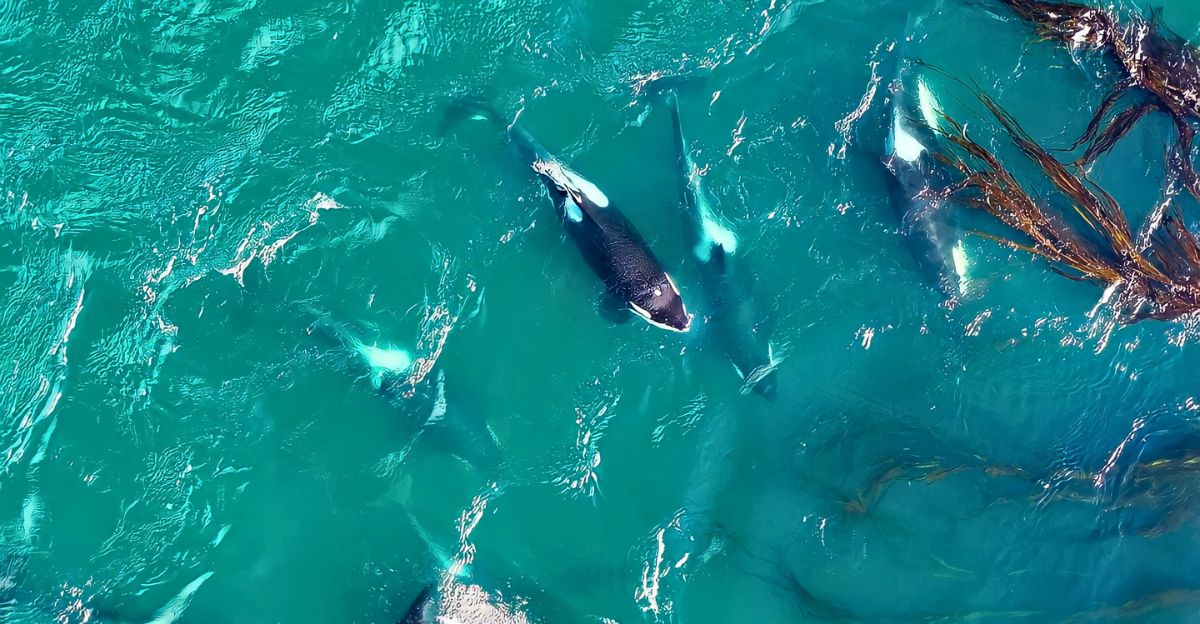
In June 2025, video footage, captured by drones, over the Salish Sea surprised and intrigued scientists globally: orcas, the ocean’s top predators, weren’t only playing with seaweed, but using it as tools to clean and massage each other.
This wasn’t a mere orca fad that would eventually pass—scientists realized they were witnessing an instant of animal ingenuity that contradicted everything we thought we knew about marine mammal intelligence.
But it doesn’t end there; what happened next could revolutionize our understanding of animal culture and the tenuous fate of these iconic whales.
Meet the Orca: The Ocean’s Most Intelligent and Social Creature
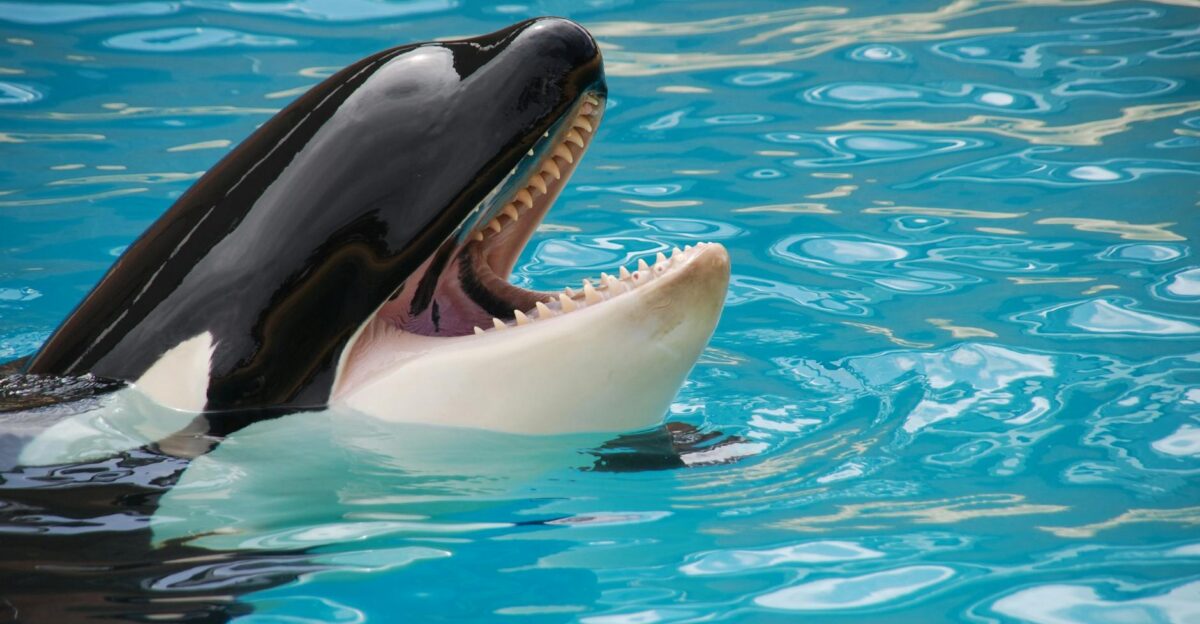
Orcas are highly intelligent, social animals that use complex communication and cooperative hunting strategies. They live in family groups, often led by older females, called pods, that make up 20 or more individuals. These pods are deeply bonded and even teach younger members essential survival skills.
The critically endangered southern resident orca population—now fewer than 75—faces threats from food shortages and pollution. Their precarious status makes understanding and protecting their unique behaviors and cultures more urgent than ever.
How Orcas Became Seaweed Toolmakers

Scientists observed southern resident orcas deliberately selecting, biting off, and shaping bull kelp stalks and then rolling them on their bodies in a coordinated, almost choreographed, grooming ritual. This behavior—dubbed “allokelping”—is more than play: it’s deliberate, social, and involves tool manufacturing and use.
The skill and coordination of this ritual further prove the species’ high social intelligence and hint at evolutionary pressures that favor innovation and social cohesion. This discovery didn’t occur overnight but resulted from 50 years of close observation and the new vantage point provided by drone technology.
The Ripple Hits Our Shores: What Orcas Teach Us About Intelligence
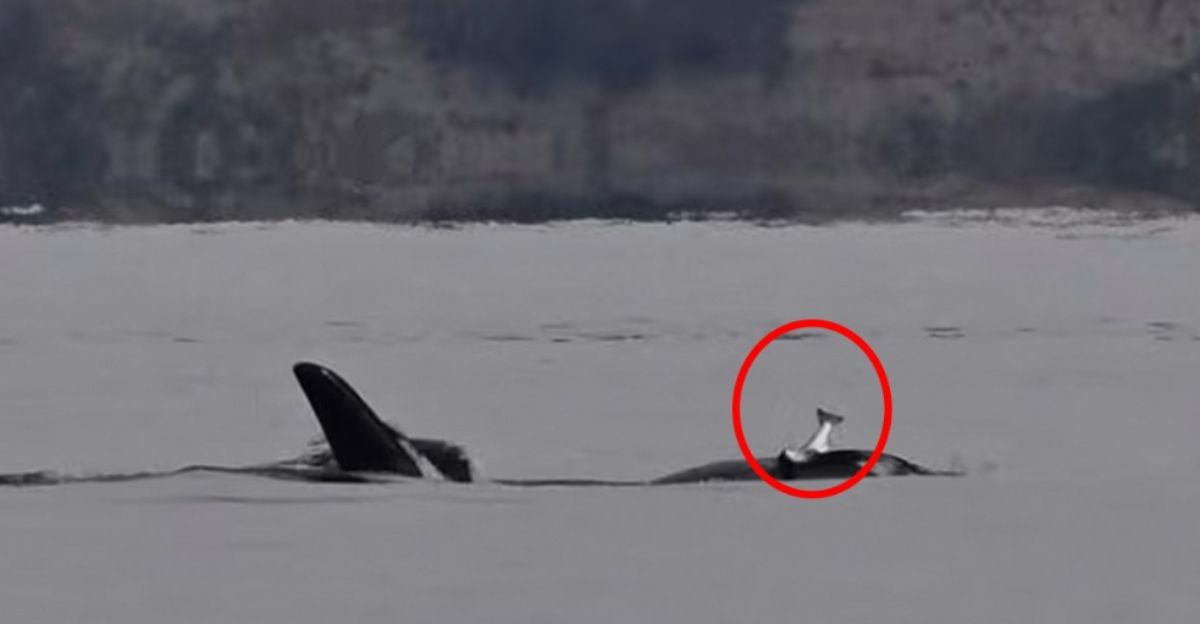
Orcas have long fascinated scientists and the public alike for their hunting strategies, dialects, and even social media—remember the “salmon hat” pod that made the rounds on Reddit and TikTok?
Now, their kelp manipulation is just another installment in their legend as oceanic geniuses. This behavior, seen across sexes and generations, is not so much about hygiene as it is about social bonding and cultural heritage.
As we watch these whales, we’re forced to reconsider how intelligent wildlife really is, and how much more we need to know about the brains beneath the waves.
Why This Behavior is So Unusual—And Yet, All Too Predictable

Animals using tools are rare, especially in marine mammals, whose streamlined bodies aren’t suited to carrying objects. Most instances of tool use are seen in search of food, like dolphins using sponges or otters cracking open shells.
But orcas are using tools for social grooming—a behavior that was once primarily seen in primates. This contradicts our assumptions about what drives innovation in nature and makes us realise that sophisticated social needs can spark as much creativity as hunger or survival.
It also raises the question: What other hidden behaviors are we missing in the dark depths of the sea?
Science Responds: A Paradigm Change in Marine Mammal Science
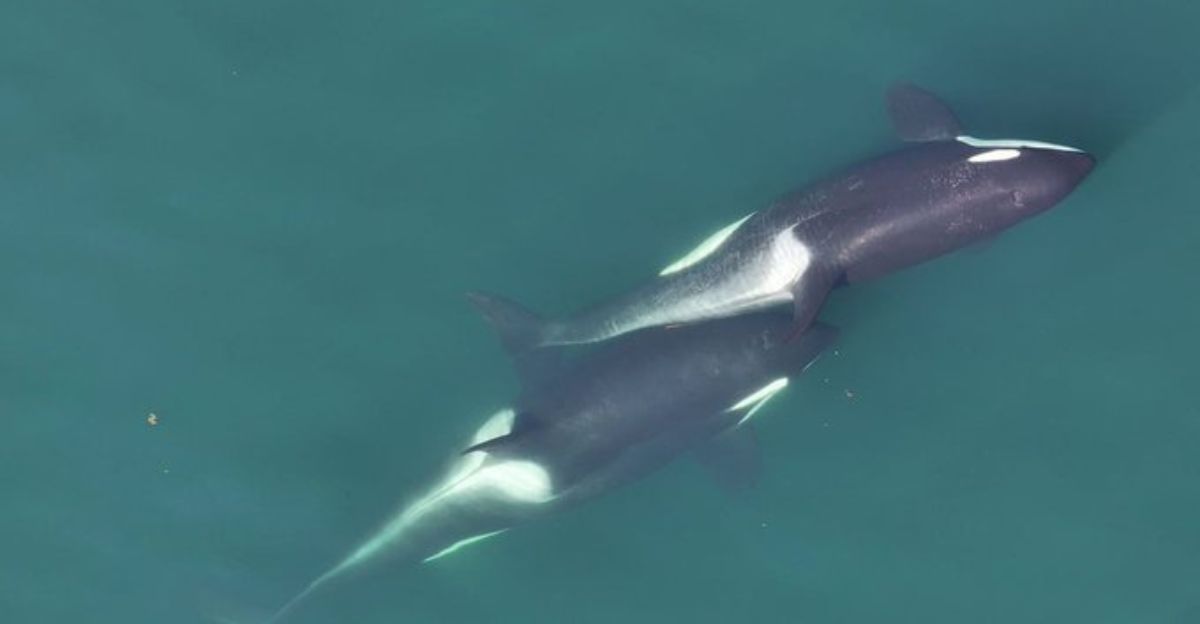
The discovery of allokelping has caused scientists to reevaluate the boundaries of animal culture and intelligence. Marine biologists are currently sifting through historic footage, re-examining decades of data, and launching new research to see whether such behaviors exist in other orca groups or species.
Agencies are supporting the use of drone technology and artificial intelligence-aided video analysis in an attempt to capture more “invisible” behavior in real-time. Further, this footage has caused controversy surrounding how we define animal tool use, culture, and even their rights, ones that could shape the path of future research and conservation initiatives.
The Wider Web: Further Marine Surprises and the Importance of Observation

Orcas are not the only marine mammals that surprise us. From dolphins using sponges to octopuses throwing rocks, the ocean is teeming with surprising animal behaviors.
However, it’s our use of advanced technological tools that’s changed our perception. Underwater cameras, drones, and citizen science websites show us a previously unseen world of innovation and adaptation.
As marine ecosystems are being remade by climate disruption and human activity, we may see ever more astonishing behaviors—some driven by necessity, some by possibility.
Voices from the Field: Surprise, Skepticism, and Alarm
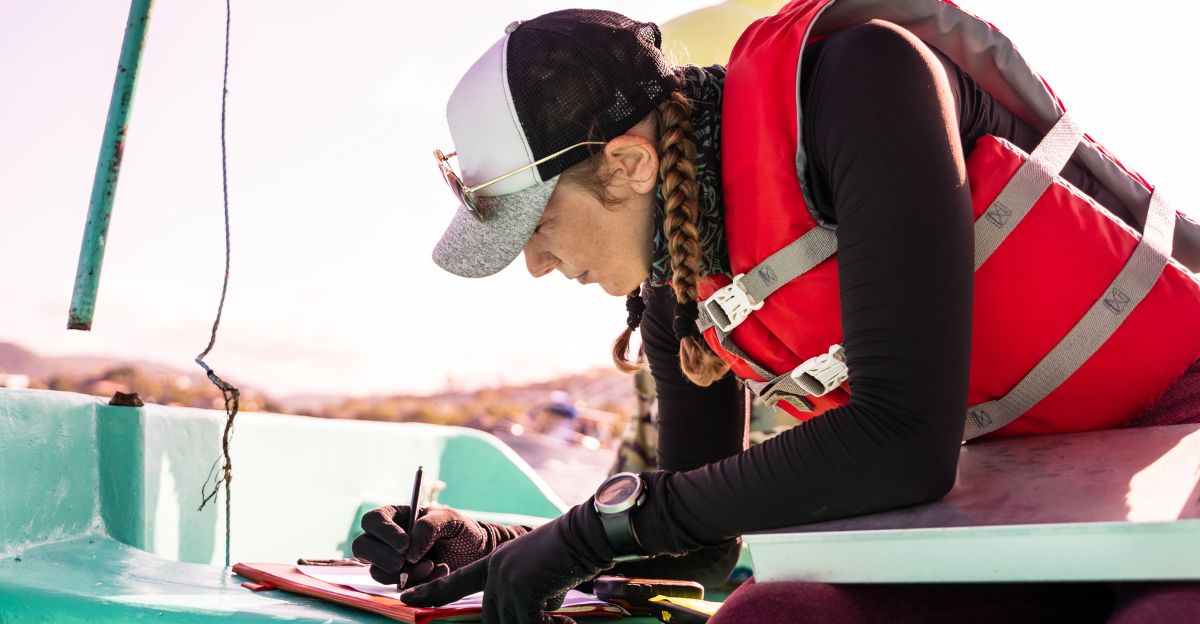
Conservationists, whale watchers, and marine biologists have responded with surprise and alarm. “It’s absolutely incredible when you think of how large these animals are and how they coordinate,” said Charli Grimes of the University of Exeter.
Others, including Michael Weiss of the Center for Whale Research, warn that such behavior is tenuous, dependent upon a critically endangered population of just 73 southern resident orcas. To those who have spent decades studying these whales, the news is bittersweet: a triumph of discovery in the shadow of extinction.
Lawmakers, Advocates, and the War for Survival

The viral spread of this discovery has captured the attention of policymakers and advocacy groups. Some call for greater protection for the orcas and their kelp forests, citing that these species are now interlinked, as are their futures.
Others disagree on the ethics of drone surveillance and debate whether more restrictions will result in more disturbances for the orcas. With public attention surging—fueled by viral videos and social media debates—there is hope that conservation will finally make some progress, but some worry that the public’s interest will fade before real change can be made.
What’s Next? Science, Conservation, and Cultural Insights

The orcas’ tool use isn’t just surprisingly interesting and odd—it’s a window into the robustness and fragility of animal cultures. If the whales disappear, so does this quirky ritual, a loss that will echo beyond genetics to the very fabric of marine society. All scientists can do is watch, understand, and conserve these actions before they vanish.
For the public, this reminds us that intelligence, culture, and innovation aren’t only human traits—and that our choices, from climate policy to everyday consumption, ripple outward and shape the future of marine life.
The Final Ripple: Why This Matters to All of Us
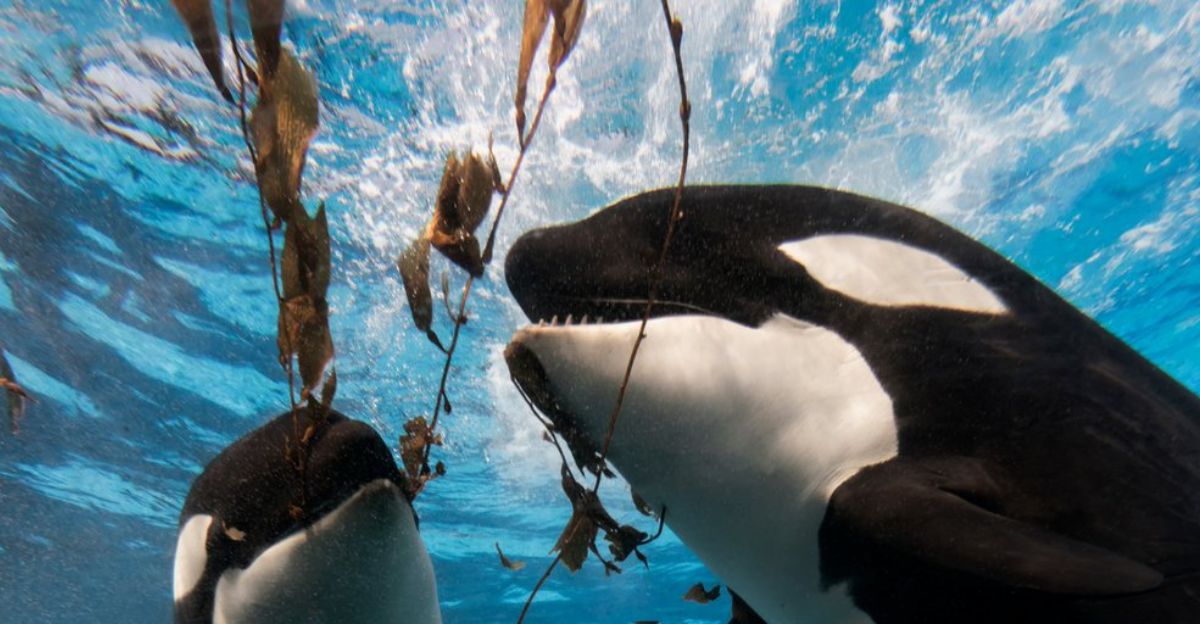
The story of orcas making tools out of seaweed is not only a scientific discovery but also an invitation to see the world in a new way. It reminds us that creativity, culture, and connection run deep in the animal kingdom.
As we look upon these whales, we ask: What other wonders are camouflaged in plain sight, just waiting for us to notice? Ultimately, the greatest instrument we have is curiosity—and the courage it takes to allow it to change us.







